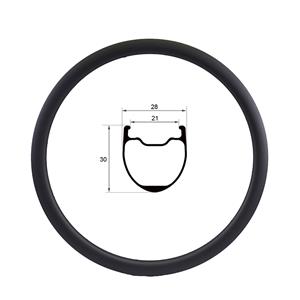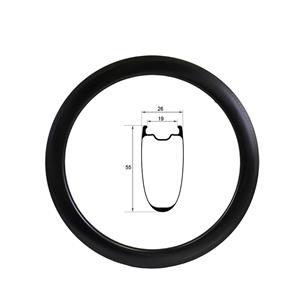Carbon Spokes VS Steel Spokes
Whether you’re upgrading your wheelset, building custom wheels, or simply curious about the latest cycling technology, understanding the differences between carbon fiber spokes and traditional steel spokes is essential. With new materials and engineering constantly pushing the boundaries of performance, making an informed choice can dramatically influence your ride quality, durability, and overall cycling experience.
Steel Spokes: The Time-Tested Classic
Steel spokes have been the industry standard for decades, prized for their durability, versatility, and cost-effectiveness. Made from high-tensile stainless steel alloys such as the renowned Sapim CX-Ray steel spokes offer excellent strength and reliable performance under a variety of conditions.
Advantages of Steel Spokes
Durability and Toughness: Steel spokes are highly resistant to impacts and fatigue, making them well-suited to all riding styles, including rugged road and gravel cycling.
Ease of Maintenance and Replacement: Because steel spokes are ubiquitous, replacements are easy to find worldwide. Their simple design allows for straightforward truing and repair, which is invaluable for everyday riders.
Cost-Effectiveness: Steel spokes offer excellent value for money, providing reliable performance without breaking the bank.
Comfort and Compliance: The slight flex in steel spokes can absorb vibrations, contributing to a more comfortable ride on rough surfaces.
Limitations
Weight: Steel spokes are heavier than carbon counterparts, which can marginally affect acceleration and climbing performance.
Aerodynamics: Traditional steel spokes are generally round and not optimized for aerodynamics, though some manufacturers produce bladed steel spokes for reduced drag.
Carbon Spokes: The Cutting-Edge Innovation
Carbon spokes represent a relatively recent advancement in wheel technology, aimed at pushing performance boundaries in weight, stiffness, and aerodynamics.
Benefits of Carbon Fiber Spokes
Lightweight: Carbon spokes are significantly lighter than steel, reducing the rotating mass of wheels and improving acceleration and climbing efficiency.
High Tensile Strength: Carbon fiber boasts superior tensile strength-to-weight ratios, enabling higher spoke tensions which improve wheel stiffness and responsiveness.
Aerodynamics: The flat, aerodynamic profiles of carbon spokes reduce drag, offering performance gains at high speeds.
Vibration Dampening: Carbon’s natural vibration absorption can enhance ride comfort by smoothing out road buzz.
Challenges and Considerations
Fragility: Carbon spokes are more susceptible to damage from impacts and improper tensioning. Unlike steel, they can crack or splinter, making them less forgiving under abuse.
Cost: The advanced manufacturing and material costs make carbon spoke wheelsets more expensive, limiting accessibility.
Compatibility: Carbon spokes require precise hub and rim interfaces designed to handle their unique stress distribution, often limiting upgrade options.
Insights: Balancing Performance, Practicality, and Value
A balanced viewpoint on this topic. While carbon spokes provide notable benefits in weight and stiffness, the practical advantages for everyday riders are often marginal. Steel spokes, with their durability and ease of maintenance, remain a top choice for most cyclists who prioritize longevity and cost-effectiveness.
Carbon spokes allow for tighter tension and aerodynamic advantages, but their fragility and replacement complexity mean they are better suited for competitive or highly performance-focused riders. Meanwhile, steel spokes’ adaptability and resilience make them a versatile option across disciplines.
Technical Deep Dive: What Makes Carbon and Steel Spokes Different?
Material Composition and Mechanical Properties
Steel: Typically made from stainless steel alloys that balance tensile strength and ductility, steel spokes can endure deformation and maintain integrity over time.
Carbon Fiber: Constructed from layered carbon sheets bonded with resin, carbon spokes excel in tensile strength but have limited flexibility. They are engineered with specific layups to optimize stiffness and durability, but their failure mode is more abrupt compared to steel’s gradual fatigue.
Weight and Rotational Mass
Reducing rotational mass directly improves acceleration and handling. Carbon spokes, often up to 30-40% lighter than steel, contribute to this. For competitive cyclists, shaving even a few hundred grams can translate into better climbing times and faster sprints.
Stiffness and Wheel Tension
Carbon spokes typically offer 7-8% greater stiffness than steel. Higher spoke tension improves wheel rigidity, enhancing power transfer and responsiveness. However, the stiffer feel can sometimes reduce comfort, especially on longer rides.
Aerodynamics
Flat and aero-shaped carbon spokes disrupt airflow less than round steel spokes, reducing drag. This aerodynamic edge can be critical in time trials and racing scenarios where every watt counts.
Choosing What’s Right for You
When deciding between carbon and steel spokes, it ultimately boils down to your priorities:
Value, Durability, and Ease: Steel spokes excel for daily riding, touring, and those wanting hassle-free maintenance.
Weight, Stiffness, and Aero Edge: Carbon spokes offer measurable performance benefits for competitive cyclists willing to invest in advanced technology.




